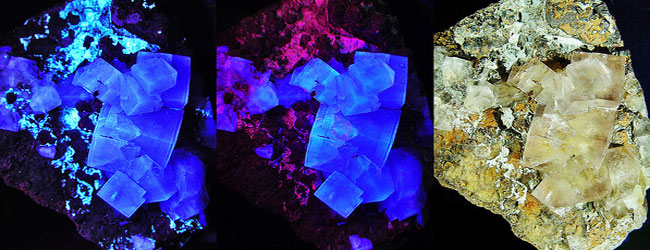Are you looking for alternatives to paraffin embedding? Read on to discover how cryo and resin embedding are two great alternatives for your tissue samples.
Studying cells and tissues visually using techniques such as cytology and histology is a common part of many research projects and is also vital in clinical settings. Cytopathology microscopy and histopathology help with diagnosis and deciding treatment options for many diseases.
Unlike cytology, histology requires the embedding of the tissue, usually using paraffin. However, the process of embedding in paraffin can be a lengthy one, and sometimes it’s not ideal for the staining you want to do or the morphological features you want to see.
Fret not, there are a few other ways we can process our tissue samples to facilitate pretty much anything you want to look at. This article will look at two of these: cryo and resin embedding and sectioning.
Cryo – It’s Not as Hard as You Think!
Frozen sections are usually used where time is of the essence, or where the antigen being visualized is sensitive to fixation. Cryosections are actually preferred over paraffin by some as it preserves the tissue as close as possible to its natural state.
Preparing your tissue for cryosectioning is pretty straightforward as there are no dehydration steps or overnight fixation. This means that the whole process could be done in one day. All you need is some OCT (Optimal Cutting Temperature embedding material), molds, and a means of freezing your tissue rapidly.
As Quick as You Like
Once your sample is excised it is usually immediately frozen by plunging it into liquid nitrogen (‘snap freezing’) or even better into a suitable container of isopentane sitting on/in dry ice. The properties of isopentane can help prevent some of the issues encountered with direct liquid nitrogen freezing (e.g. ice crystals).
The tissue only needs to be left to freeze for a minute or so before being transferred to a mold containing a layer of OCT embedding compound that has been sitting in some dry ice. The tissue is then completely covered in OCT and kept on dry ice to allow the OCT to freeze completely.
These can then be stored at -80oC until you are ready to use them. Alternatively, if you lack liquid nitrogen, the fresh tissue can also be placed in the mold containing OCT on dry ice directly. However, in this case, the tissue takes longer to freeze and can form ice crystals that may disrupt the morphology.
Warm up to -20oC
When you are ready to cut your frozen sections, allow the tissue/molds to come to the correct temperature by leaving them in the cryostat microtome at -20oC for at least an hour before sectioning.
Now for the Tricky Part
As you can see, getting to the stage where you are ready to section is a walk in the park. However, the ability to obtain nice cryosections of good quality is a little trickier. A number of factors, including tissue fixation, the distance of the anti-roll plate, air humidity, and the temperature outside of the chamber, (amongst other things!), can really affect the quality of sections you get. Additionally, although it is possible to obtain frozen sections that preserve morphology to a reasonable standard, they are generally less well preserved than paraffin (or resin).
Don’t Forget to Fix
Once you have those perfect sections, probably after a number of tries, they can be ‘melted’ onto slides that have been kept at room temperature, and then you can either freeze them again at -80oC until you need them or use them straight away. Either way, when you come to use them, they still need to be fixed- usually by methanol or PFA for this type of sectioning.
If it’s Morphology You’re After…..
If you are less interested in antigenicity and really need the morphology of the tissue to be preserved, especially if you are using electron microscopy (EM) then resin embedding could be an option for you.
Some areas of diagnostic histopathology require greater cytological and nuclear detail than can be seen in the normal 5 µm paraffin sections.
To achieve this high degree of detail it is necessary to prepare sections that are less than 1 µm thick. To do this we need to use a much harder embedding material to provide adequate support to tissues during sectioning.
The Answer Lies in Resin
Embedding tissues in resin can help with this issue and allow you to get sections with improved morphology. The two types of resin used in embedding are epoxy and acrylic resins.
Epoxy resins are known to have good sectioning properties, harden uniformly, change very little in volume during curing, and are very stable under the EM. Therefore they are often chosen for the best ultrastructural observation.
However, acrylic resins (e.g. methacrylate) have a very low viscosity, even at the lower temperatures required for immunocytochemistry, and are miscible with water depending on the type used.
They also have lower toxicity than the epoxy resins and although the preservation may not be quite as good, especially of lipids, they are often chosen over epoxy resins for EM.
Fixation for Resin Embedding
The recommended fixative for resin embedding is glutaraldehyde (4% in 0.1 M phosphate buffer). Like paraffin embedding, there follows a step-by-step process of dehydration (in alcohol) and then infiltration where the alcohol is replaced with resin.
Solutions of resin must be made immediately before use.
When resin infiltration is complete, the molds are placed in an oven for curing. Before cutting, the excess resin can be trimmed as we do for paraffin sections.
Not Your Usual Microtome
Glass or diamond knives are better suited to sectioning resin embedded material than steel knives as the edges are sharper.
Dry sectioning is preferred for epoxy resin whilst wet is better for methacrylate. W
hen you are cutting sections with a glass knife fitted with a trough, they will float directly onto the water and can be transferred to a pool of water upon a clean, glass slide. This, in turn, is placed on a hotplate set at 60oC to expand and dry the section.
Tip: a moist cotton bud can be used to collect resin sections that are cut dry.
Getting Through the Barrier
Hard resins provide a barrier to dyes and markedly reduced staining clarity. Removal of this type of resin is therefore recommended before staining.
Epoxy resins can be degraded by alcoholic sodium hydroxide, potassium hydroxide, sodium methoxide, or bromine vapor.
Take Care When Using Resins
The epoxy resins used for embedding are potentially more dangerous than the fixatives themselves and are known to cause cancer in rodents.
During the embedding process, the resins are dissolved in solvent(s) that can carry the resin into your skin EVEN through latex gloves.
In contrast to fixatives, which act quickly and are more apparent the consequences of resin exposure are not apparent for years. Therefore be careful with all resins prior to polymerization into hard blocks.
Cryo and Resin Embedding Summarized
Cryo and resin embedding offers two simple techniques that are viable alternatives to paraffin and can overcome some of the technical issues of paraffin embedding. However, both cryo and resin embedding have their individual challenges and issues that should be considered before choosing them for your precious tissue samples.
Want to know more about histology? Visit the Bitesize Bio Histology Hub for tips and tricks for all your histology experiments.







